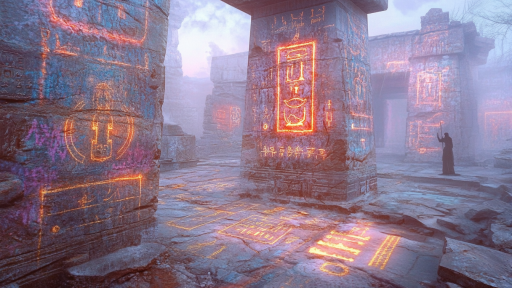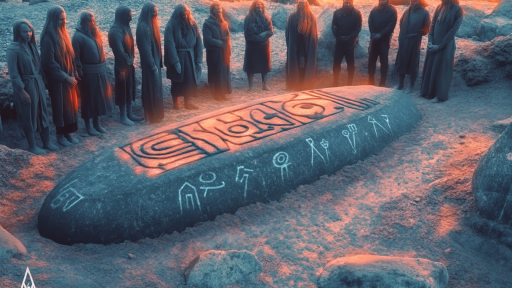
Some legends are so strange, so wildly unbelievable, that they seem like pure invention—tales spun to entertain, frighten, or explain the unexplainable. But every now and then, a story dismissed as myth proves to be startlingly true. Hidden beneath centuries of folklore are kernels of reality, waiting to be unearthed by curious minds and bold discoveries. These bizarre legends crossed the line from fantasy to fact, revealing that truth can be far stranger than fiction.
The City of Troy Wasn’t Just a Myth

Long believed to be nothing more than a tale from Homer’s Iliad, the legendary city of Troy was dismissed by scholars for centuries. That changed in the 19th century when ruins were discovered in modern-day Turkey, revealing a city that matched ancient descriptions. Layers of destruction and rebuilding suggested violent conflict, adding weight to the story of the Trojan War. What was once poetic myth is now considered one of archaeology’s greatest confirmations.
The Kraken Was Based on a Real Sea Monster

Tales of the Kraken described a monstrous creature dragging entire ships beneath the waves. While no such beast as described in sailor lore exists, the discovery of giant squids—some stretching over 40 feet long—gave the legend a startling biological basis. These deep-sea titans, with eyes the size of dinner plates and powerful tentacles, match the fearsome image conjured by ancient mariners. The sea may not be as empty as we’d like to believe.
The Vampire of New England

In 19th-century New England, villagers exhumed corpses and performed strange rituals to stop supposed vampire attacks. One of the most chilling cases was Mercy Brown, whose body was exhumed and found oddly preserved—seen as a sign of the undead. Her heart was removed and burned in an attempt to stop the mysterious illness killing her family. While we now know it was tuberculosis, the panic spawned one of America’s real vampire legends.
The Amazon Warrior Women Actually Existed

Greek legends spoke of fierce warrior women known as Amazons, long thought to be fictional. But excavations of Scythian burial sites revealed female skeletons buried with weapons and showing signs of battle injuries. These nomadic women rode horses, hunted, and fought alongside men—exactly like the mythical Amazons. The line between myth and history blurred on the steppes of Central Asia.
The Curse of Ötzi the Iceman

When Ötzi the Iceman was discovered frozen in the Alps, he was hailed as a miraculous archaeological find. But shortly after his unearthing, several people connected to the discovery died under unusual circumstances. Whispers of a curse began to circulate, eerily echoing ancient legends about disturbing sacred remains. Though coincidence is the likely cause, the story of Ötzi carries an uncanny chill.
The Lost Army of Cambyses Was Found

According to Herodotus, an entire Persian army vanished in a desert sandstorm in ancient Egypt, never to be seen again. For centuries, the tale was considered fanciful—until remains of Persian-era weaponry, bones, and artifacts were discovered in Egypt’s Western Desert. The findings strongly suggest a catastrophic event that mirrors the ancient account. A legendary disappearance turned out to be history buried in the sand.
The Beasts of Gévaudan Were Real Killers

In 18th-century France, the region of Gévaudan was terrorized by a monstrous creature that killed scores of people. Described as a giant wolf-like beast, the legend grew with each horrific attack. While exaggerated over time, evidence now suggests the killer was a real, unusually large wolf—or possibly a trained hybrid. The terror it inspired left an undeniable mark on French folklore.
The Bimini Road and Atlantis Theories

Legends of Atlantis inspired centuries of speculation, including a strange underwater rock formation near the Bahamas known as the Bimini Road. The neatly aligned stones sparked theories of ancient civilizations and lost cities. While scientists believe it may be a natural formation, the mystery endures—and continues to feed the idea that Plato’s Atlantis wasn’t entirely imagined. Sometimes, the ocean holds onto its secrets a little too well.
The Man in the Iron Mask Had a True Identity

The legend of the masked prisoner held in secrecy in France fascinated writers and historians alike. For years, his identity was a complete mystery—fueling speculation of royal scandal and political betrayal. Modern research has revealed that the man was likely Eustache Dauger, a valet imprisoned for unknown reasons. Though the legend grew fantastical, its core was chillingly real.
The Werewolf Trials Were Historical Events

Long before vampire hysteria, Europe was gripped by werewolf trials. People were accused of transforming into wolves and committing horrific acts—sometimes even confessing under torture. While the supernatural aspect was fictional, the trials, executions, and paranoia were very real. These dark episodes blurred the line between myth and medieval justice.
The Giant Serpent of the Amazon

Amazonian tribes spoke of a monstrous serpent called the “Yacumama,” a creature so massive it could swallow boats whole. Explorers once laughed off these tales, but sightings of anacondas over 30 feet long added weight to the legend. Some cryptozoologists even suggest larger specimens may remain undiscovered in remote river basins. The jungle still holds tight to many of its most dangerous secrets.
The Flood Myth Has Global Roots

From Noah’s Ark to Mesopotamian and Indigenous flood stories, cultures around the world speak of a great deluge. For years, scholars believed these were separate symbolic myths. But geological evidence now shows a massive flooding event may have occurred at the end of the last Ice Age, submerging coastal areas and reshaping human history. The story of a world swallowed by water might not be so far-fetched after all.
The Real Hobbit People of Indonesia

Stories of tiny, human-like beings living in remote jungles were long considered tribal myths. But in 2003, archaeologists discovered the remains of Homo floresiensis—a small, now-extinct human species—on the Indonesian island of Flores. Standing just over three feet tall with unusually shaped skulls, they resembled the creatures described in local folklore. The legend of the “Ebu Gogo” wasn’t just fantasy—it was an echo of a real human lineage lost to time.
What If Legends Are Just Lost Truths?

For every legend dismissed as mere folklore, there’s a possibility it’s based on forgotten truths—echoes of real events, people, or creatures warped by time. As history, science, and exploration continue to peel back the layers of the past, more of these bizarre tales prove to be grounded in reality. The boundary between myth and truth is thinner than we think. Perhaps the strangest legends are simply facts waiting to be rediscovered.





